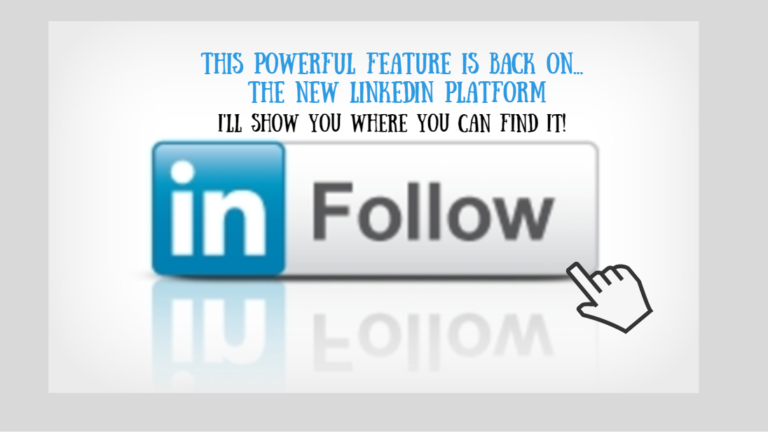10 Reasons why Linked In will be the #1 recruiting portal
I’ve been saying that Linked In is the #1 recruiting portal for the last two years and here is the proof! Linked In is the number one resource for all your employment needs. It is the number 1 professional social media platform where over 89% of employers look to hire their next employee. Linked In is a very powerful tool.
1. Linked In has a high passive to active member ratio – One of the primary differences between a good and a great recruiting source is the ratio of passive over active prospects that populate it. Although both types of prospects are desirable, those who are not actively looking for a job (the so-called passives) are much harder to find and communicate with. If your target is active job seekers, you must realize that in a tight labor market, Linked In doesn’t require advanced direct sourcing techniques to identify and sell individuals on applying. With little more than a job posting, companies will find you on job boards or your career site. But if you’re seeking the roughly 80% of prospects who are not actively looking for a job, you have fewer sourcing choices because recruiters will not look at job announcements or visit career sites. But fortunately, these employed and not-looking individuals comprise the majority of Linked In members.
2. The number of members continues to increase – Because of its professional focus and its many uses outside of recruiting, it has become a standard practice for most professionals to have a profile on Linked In. In fact, one of its strengths is that its members can be visible on Linked In without being suspected of looking for a job. As Linked In has added more professional features (i.e. answers, groups, events, etc.) employees have even more professional reasons for joining, expanding the percentage of members who are currently not active job seekers. Having a profile does, however, provide the added benefit of making a person “visible” to recruiters. So even if you’re not actively looking, having a profile will provide you with an opportunity to be periodically “found,” so that at the very least you will know if you’re still marketable.
3. Its database quality can be verified – Although LinkedIn has more than 150 million users, volume doesn’t always mean quality, so you always need to verify the quality of the membership of any prospect database. The best way to verify quality is to use your own employees as a benchmark measure. First, make a list of your very best performers in a high-volume key job at your firm. Then check the Linked In database to see what percentage of your best employees are found in a search of their database (you can do the same analysis for your worst employees). Then compare the percentage of your top performers found on Linked In with the ratio of your top performers found on other sites including large job boards, referral sites, Facebook, and Twitter. Don’t be surprised when you find that the highest percentage of your top performers is found on LinkedIn.
4. It is referral-friendly – The most effective recruiting source both in volume and quality are employee referrals, so any sourcing option becomes more valuable if your employees will regularly use it find referrals. Because Linked In has many features that are not related to job search, your employees probably already frequent Linked In to benchmark, to gain mentors, to ask questions and to learn. Linked In makes it easy for your employees to identify and connect with others in the same profession that may eventually become an employee referral. Recruiters, who have a broader access to the entire LinkedIn database, can also “suggest” names within Linked In that an employee may want to build a relationship with in the hope of eventually making them a referral.
5. Its profiles are easily comparable and searchable – Because resumes come in dozens of different formats, they are a nightmare to search and compare side-by-side. Linked In profiles are consistent, meaning that they all contain the same format in every profile. This consistency makes it easier for recruiters and hiring managers to compare different prospects side by side on the same factors. Linked In makes it easy to search their database on a variety of topics including industry, connections, current and previous companies, job title, location, profession, and education. Linked In also provides targeted updates and follower statistics which allow you to limit and target the updates that you receive.
6. Its profiles are accurate – Research has shown that Linked In profiles can be more accurate than resumes. Because their profiles are seen by so many colleagues and individuals (many of whom would’ve attended the same schools and worked at the same organization), it’s much harder for an individual to “get by” with a profile that contains inaccurate information. Linked In profiles are also more likely to be up-to-date than resumes, in part because Linked In will periodically encourage you to keep improving and updating your profile.
7. Linked In can help you identify when someone is about to begin looking – Smart recruiters can learn that certain actions by an individual may “signal” that they are about to enter “job search mode.” The signals might include updating their profile, joining new groups, becoming a Linked In answer “top expert” or increasing other networking activities. Contacting a targeted individual who in the past has expressed no interest in a job may get a completely different result when they are considering entering job search mode. And if you get there early, you will likely encounter little recruiting competition.
8. Linked In makes it easy to apply – Allowing individuals to apply instantly for a job without having to update their resume is a powerful advantage. Some firms are beginning to use a Linked In profile (at least initially) as a substitute for a resume. One way to do that is to add an “Apply with Linked In” button to your job postings.
9. It has a job-posting capability – Linked In makes it easy to post and distribute current job openings to both types of prospects. When you are seeking active candidates, use Linked In job postings as a supplement to your normal job-posting channels.
10. It provides recommendations and facilitates introductions – If you need additional information on a prospect, Linked In provides a recommendations feature, which although subjective, it can provide additional insights into the individual and what others have experienced when working with them. Linked sIn also has an “introduction” feature that allows an employee to introduce a recruiter or another colleague to one of their contacts.
If you apply these 10 simple skills to your career search you will begin to notice amazing results. It doesn’t take long to get to where you want to be if you follow a guided list of proven methods. I look forward to seeing your results.
Coach Courtney



